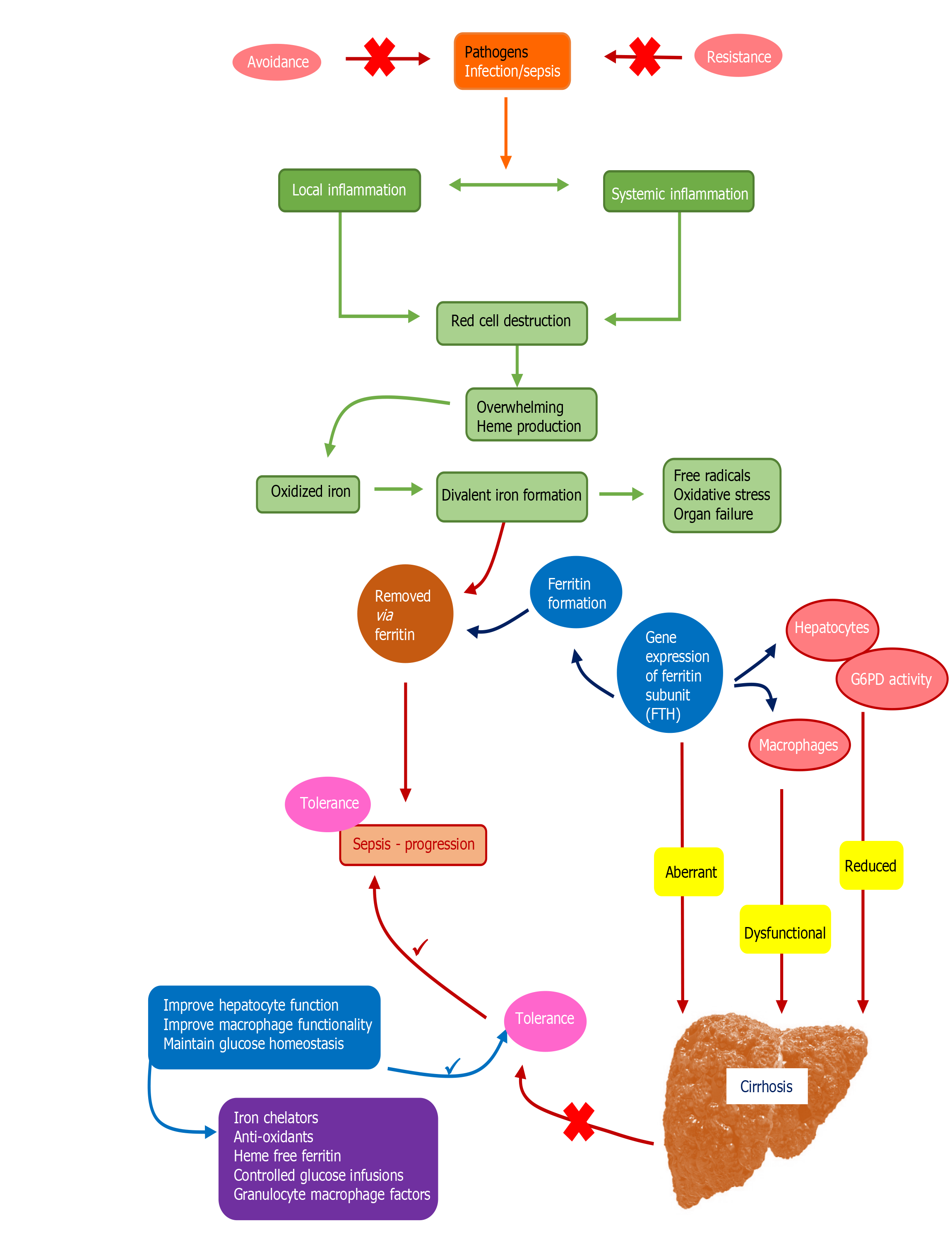Copyright
©The Author(s) 2020.
World J Hepatol. Aug 27, 2020; 12(8): 451-474
Published online Aug 27, 2020. doi: 10.4254/wjh.v12.i8.451
Published online Aug 27, 2020. doi: 10.4254/wjh.v12.i8.451
Figure 2 Insights into pathophysiology of tolerance toward sepsis and loss of tolerance leading to higher risk of sepsis in cirrhosis patients[4,23-25].
Apart from tolerance, loss of resistance and exposure to pathogens (shown as red crosses in the upper part of the figure) can initiate infections that can lead to development of sepsis. In patients with infections who develop sepsis, local and systemic inflammation lead to dysregulated red cell homeostasis and development of toxic oxidants especially iron ligands that are removed by ferritin. Ferritin formation and oxidant sweep are regulated systematically through hepatocyte and macrophage functions in the healthy liver through expression of glucose-6-phosphatase (G6PD) and ferritin H gene subunit (FTH). In cirrhosis, liver dysfunction results in aberrant FTH activity, defective macrophage and hepatocyte functions and reduction in G6PD activity, resulting in increased oxidant stress and loss of tolerance to infection, leading to progression of sepsis through reduction in functional ferritin (shown as red crosses at the bottom). The blue and purple boxes demonstrate steps and measures for correction of dysregulated responses in a patient with cirrhosis, respectively, so as to improve tolerance to infection and prevention of sepsis. FTH: Ferritin H gene subunit; G6PD: Glucose-6-phosphatase.
- Citation: Philips CA, Ahamed R, Rajesh S, George T, Mohanan M, Augustine P. Update on diagnosis and management of sepsis in cirrhosis: Current advances. World J Hepatol 2020; 12(8): 451-474
- URL: https://www.wjgnet.com/1948-5182/full/v12/i8/451.htm
- DOI: https://dx.doi.org/10.4254/wjh.v12.i8.451









